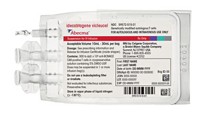Advertisement
Grab your lab coat. Let's get started
Welcome!
Welcome!
Create an account below to get 6 C&EN articles per month, receive newsletters and more - all free.
It seems this is your first time logging in online. Please enter the following information to continue.
As an ACS member you automatically get access to this site. All we need is few more details to create your reading experience.
Not you? Sign in with a different account.
Not you? Sign in with a different account.
ERROR 1
ERROR 1
ERROR 2
ERROR 2
ERROR 2
ERROR 2
ERROR 2
Password and Confirm password must match.
If you have an ACS member number, please enter it here so we can link this account to your membership. (optional)
ERROR 2
ACS values your privacy. By submitting your information, you are gaining access to C&EN and subscribing to our weekly newsletter. We use the information you provide to make your reading experience better, and we will never sell your data to third party members.
Pharmaceuticals
Predicting engineered blood clotting protein immunogenicity
Scientists reexamine Novo Nordisk’s failed Factor VII protein for hemophilia
by Ryan Cross
January 16, 2017
| A version of this story appeared in
Volume 95, Issue 3
Tiny changes to a therapeutic protein can enhance its performance or initiate a dangerous immune reaction. Novo Nordisk knows that all too well after dropping a Phase III drug trial in 2012 for its engineered Factor VII blood-clotting protein designed to treat hemophilia. Using publicly available software, Novo Nordisk and Food & Drug Administration researchers began outlining methods to predict how immune cells chop up and display engineered proteins on their surface. Their model has shown that two out of three engineered changes in the Factor VII protein activate unwanted T cell immune responses in some people (Sci. Transl. Med. 2017, DOI: 10.1126/scitranslmed.aag1286). One determining factor for the response is a person’s unique HLA genes, which are involved in presenting foreign protein fragments to T cells. The researchers subsequently used the model with HLA testing to correctly identify patients from the failed clinical trial that did and didn’t develop antibodies to the engineered protein. HLA testing is already common for organ donations, prompting study leader Zuben E. Sauna of FDA to say that more studies like this may lead to HLA tests being applied in “precision medicine,” where drugs can be given to the majority of patients they will help, and withheld from the few that they could harm.



Join the conversation
Contact the reporter
Submit a Letter to the Editor for publication
Engage with us on Twitter